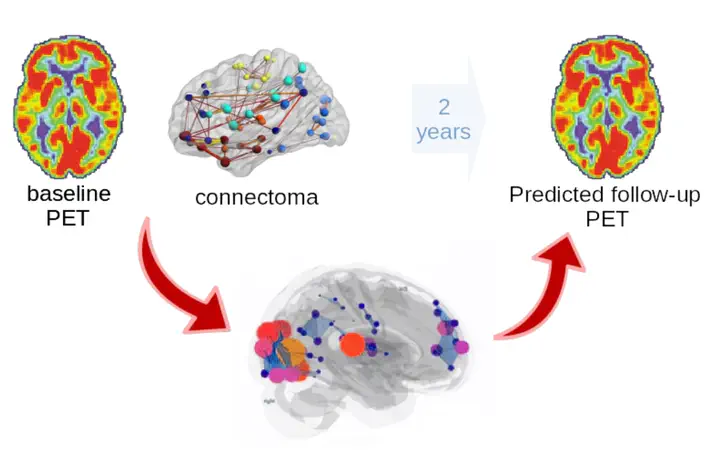Modeling the Spread of Misfolded Proteins in Alzheimer’s Disease using Higher-Order Simplicial Complex Contagion

Abstract
Neurodegenerative diseases are characterized by complex proteins misfolded that propagate within the brain. For instance, current findings highlight the role of 2 specific misfolded proteins in Alzheimer which are believed to spread using brain fibers as highways. Previous studies investigated such spreading by simulation models or machine learning-based predictors which adopt the brain connectome as the underlying spreading network. However, the structural connectome by construction only describes pairwise connections between nodes in a graph. High-order interaction complex networks offer significant advantages over normal graphs because they can capture interactions that go beyond simple pairwise relationships. Protein misfolding and aggregation often involve cooperative behaviors or group dynamics that normal graphs, with their focus on individual edges, cannot adequately represent. The non-linear and multiscale nature of protein misfolding might be better suited to a richer representation of higher-order models. In this study we investigate whether higher-order networks can provide improved fits and explanatory power in this context. More specifically, we employ a simplicial complex contagion model for amyloid beta to predict protein misfolding spread. The simplicial contagion complex produced a mean reconstruction error of 0.030 for Alzheimer’s patients regarding the predicted protein deposition across all brain region in a 2-year horizon and other results, outperforming previous studies, especially for cases in which the misfolded protein were non-increasing steadily. Despite the limited time span, this study highlights the potential of combining advanced network analysis to capture the intricate dynamics of protein aggregation across neural networks.